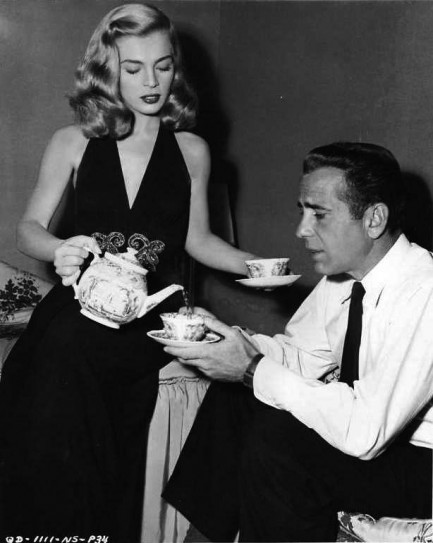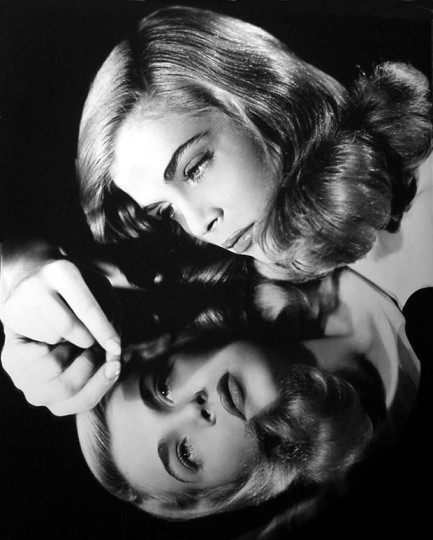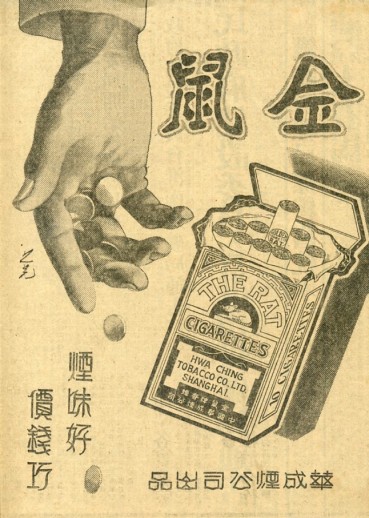| Musiquarium | Apr 30 2024 |



| Hollywoodland | Mar 21 2024 |

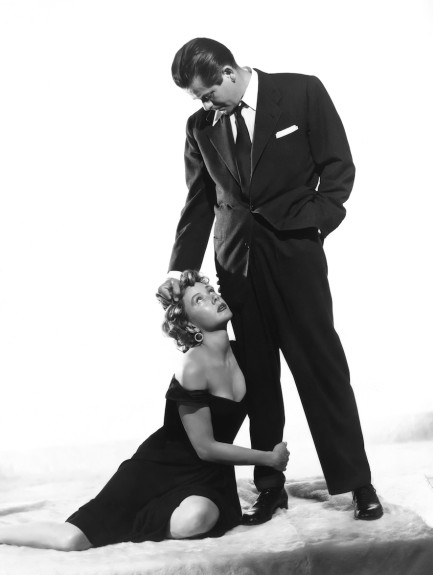
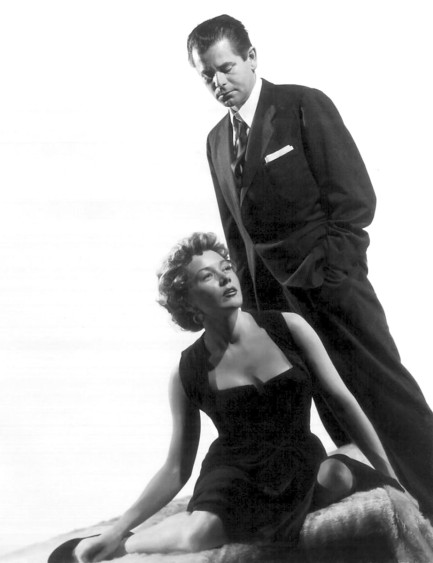
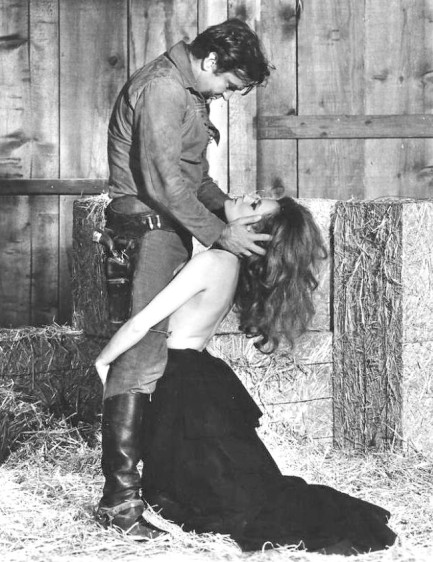
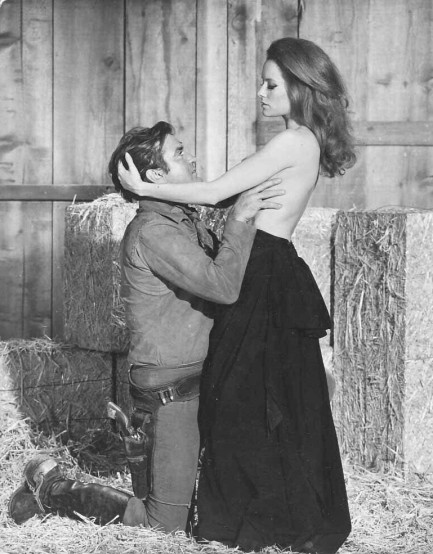 Rod Taylor and Luciana Pauluzzi swap subordinate positions for 1967's Chuka.
Rod Taylor and Luciana Pauluzzi swap subordinate positions for 1967's Chuka.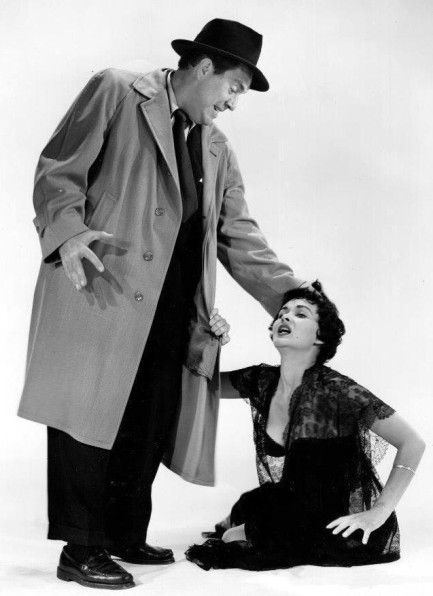 Edmund O'Brien goes for the time honored hair grab on Marla English for 1954's Shield for Murder.
Edmund O'Brien goes for the time honored hair grab on Marla English for 1954's Shield for Murder.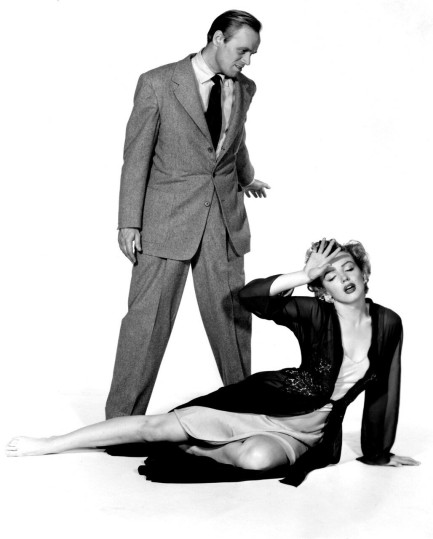 Marilyn Monroe swoons as Richard Widmark snarls for Don't Bother To Knock, 1952.
Marilyn Monroe swoons as Richard Widmark snarls for Don't Bother To Knock, 1952. Inger Stevens and Terry Ann Ross for Cry Terror, an adaptation of a novel we talked about a few years ago.
Inger Stevens and Terry Ann Ross for Cry Terror, an adaptation of a novel we talked about a few years ago.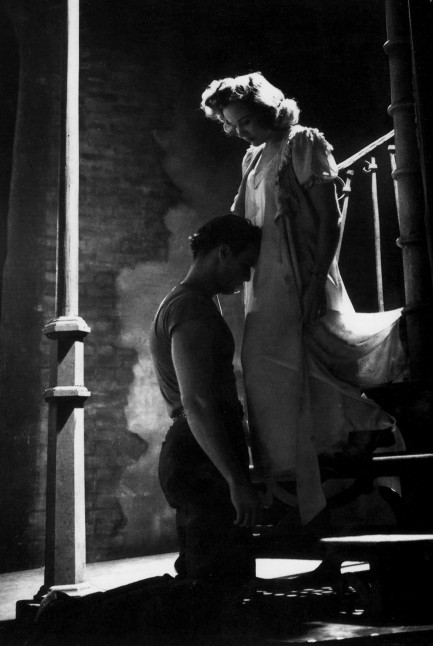 Kim Hunter soothes an overheated Marlon Brando in a promo for 1951's A Streetcar Named Desire.
Kim Hunter soothes an overheated Marlon Brando in a promo for 1951's A Streetcar Named Desire.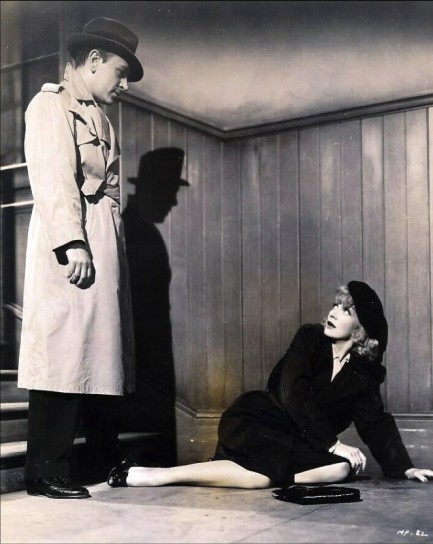 George Raft menaces Marlene Dietrich in the 1941 comedy Manpower.
George Raft menaces Marlene Dietrich in the 1941 comedy Manpower.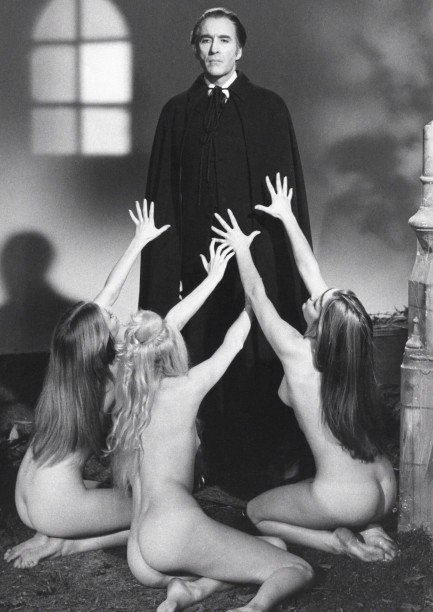
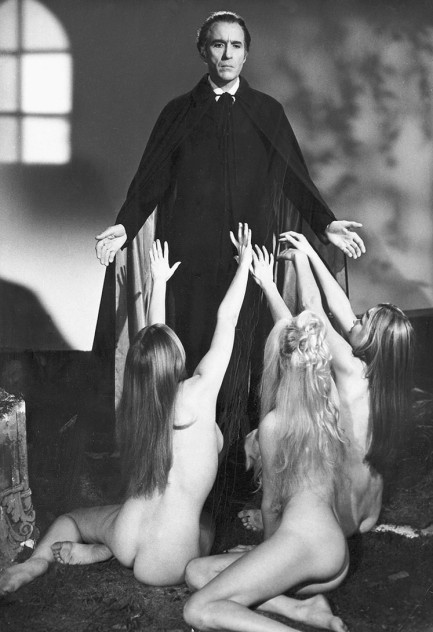 As promos go, these actually make sense. They show three unidentified models mesmerized by vampire Christopher Lee for 1970's Taste the Blood of Dracula.
As promos go, these actually make sense. They show three unidentified models mesmerized by vampire Christopher Lee for 1970's Taste the Blood of Dracula. Glenn Ford is at it again, this time looming over Rita Hayworth for the 1946 classic Gilda.
Glenn Ford is at it again, this time looming over Rita Hayworth for the 1946 classic Gilda.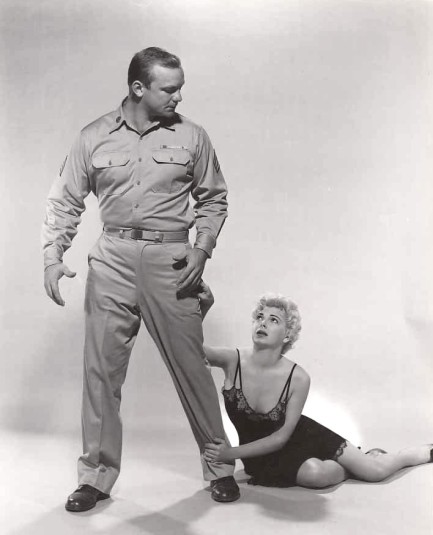 Aldo Ray and Barbara Nichols for 1958's The Naked and the Dead.
Aldo Ray and Barbara Nichols for 1958's The Naked and the Dead.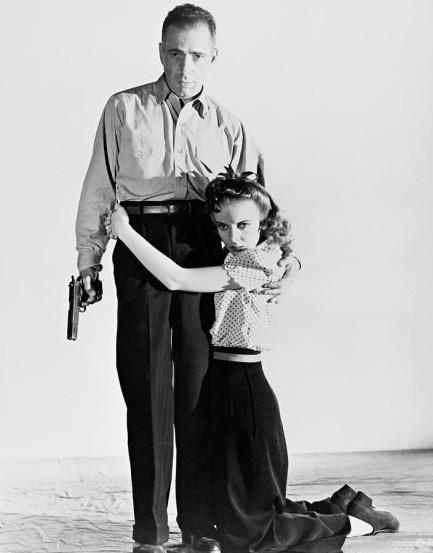 This one shows less domination and more protectiveness, as Humphrey Bogart prepares to defend Ida Lupino for High Sierra, 1941.
This one shows less domination and more protectiveness, as Humphrey Bogart prepares to defend Ida Lupino for High Sierra, 1941.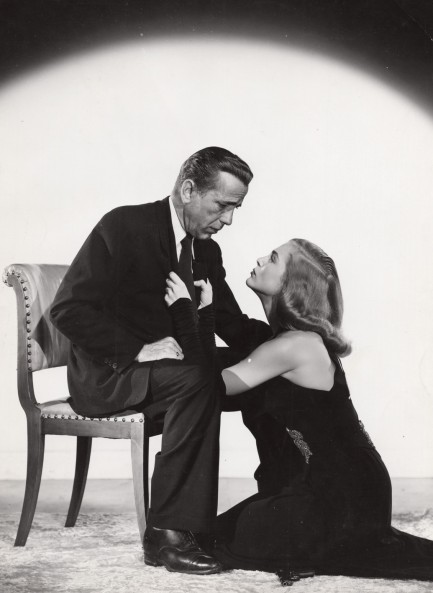 Humphrey once more. Here he's with Lizabeth Scott for Dead Reckoning, 1947.
Humphrey once more. Here he's with Lizabeth Scott for Dead Reckoning, 1947.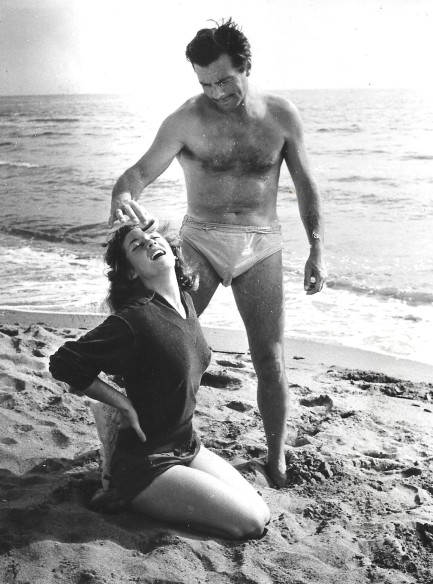 This shot shows Brazilian actress Fiorella Mari with an actor we can't identify in a movie we also can't identify.
This shot shows Brazilian actress Fiorella Mari with an actor we can't identify in a movie we also can't identify.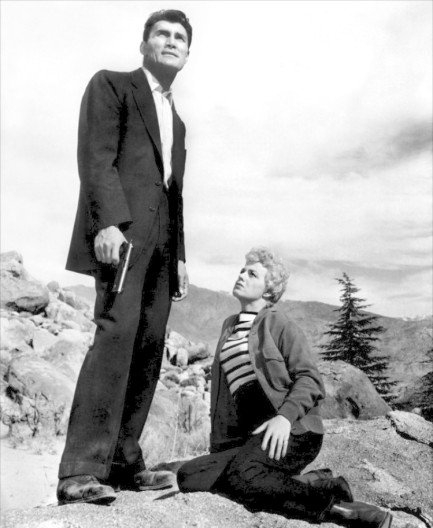 Shelly Winters and Jack Palance climb the highest mountain together for I Died a Thousand Times, 1955.
Shelly Winters and Jack Palance climb the highest mountain together for I Died a Thousand Times, 1955.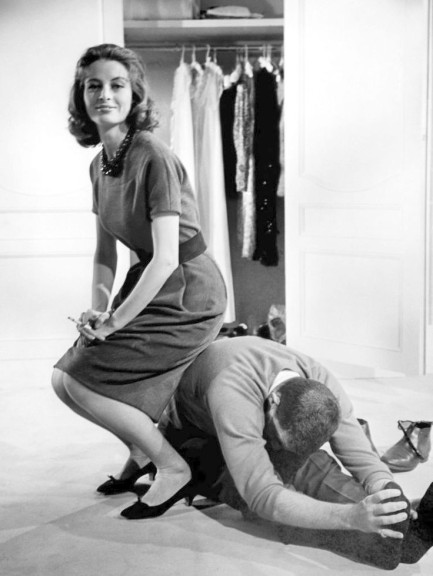 As we said, we didn't find as many examples of kneeling men, but we found this gem—Cappucine makes a seat of director Blake Edwards on the set of The Pink Panther in 1963. Does this count, though? While Edwards is subordinate, he isn't kneeling and it really isn’t a legit promo.
As we said, we didn't find as many examples of kneeling men, but we found this gem—Cappucine makes a seat of director Blake Edwards on the set of The Pink Panther in 1963. Does this count, though? While Edwards is subordinate, he isn't kneeling and it really isn’t a legit promo.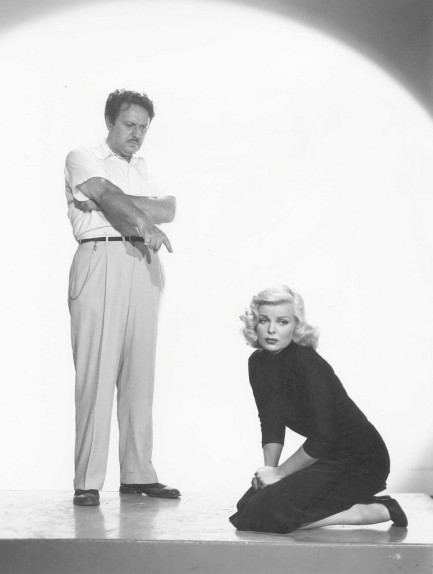 And lastly, in a curious example, Hugo Haas seems to tell Cleo Moore to stay in a shot made for 1953's One Girl's Confession.
And lastly, in a curious example, Hugo Haas seems to tell Cleo Moore to stay in a shot made for 1953's One Girl's Confession.
| Femmes Fatales | Nov 23 2023 |

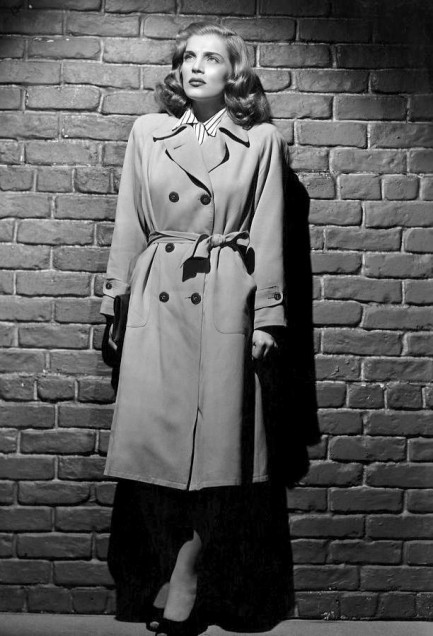
Lizabeth Scott, who you see above, has an outsize legacy in film history thanks to her appearances in several film noir landmarks: Dead Reckoning, I Walk Alone, Pitfall, and Too Late for Tears come to mind. She also appeared in Dark City, Paid in Full, The Racket, the bizarre British noir-adjacent melodrama Stolen Face, and others. The above promo image was made when she appeared in one of her best movies—the Barbara Stanwyck headlined film noir The Strange Love of Martha Ivers, from 1946.
| Vintage Pulp | Nov 18 2022 |

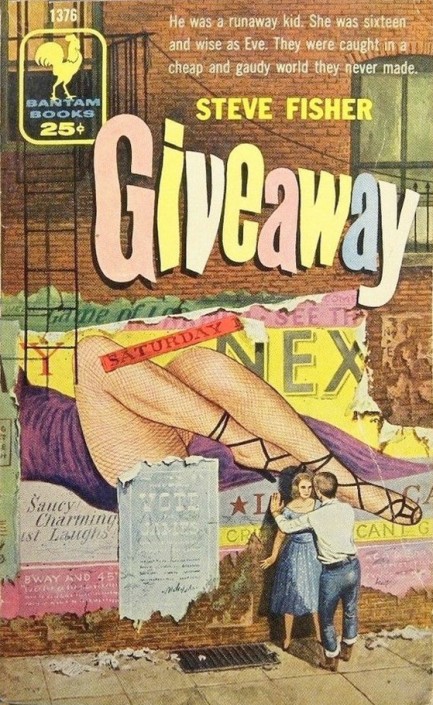
This 1955 Bantam edition of Steve Fisher's 1954 novel Giveaway has a front by James Hill that's at once beautiful and sordid. We've always been drawn to this art, so after seeing the book around for years we finally decided it was time to give it a read. Fisher tells the story of a seventeen-year-old Midwestern runaway named Eddie Shelton who ends up in Los Angeles and meets a mother and daughter who make their living by selling prizes they win for appearing on (fictional) game shows such as Down Melody Street and Cookies or Cash. It's difficult to get on the shows because the producers prefer novices, rather than “pros.” Jane, the daughter in this duo, sees Eddie as her ticket to being booked on a show called Man and Wife that offers huge prizes, including a trip to Hawaii and a year's wardrobe. She's willing to do anything for the chance—even convince Eddie she's in love with him.
The allegory is strong with this book. It reminded us of They Shoot Horses, Don't They?, with its capitalist critique folded within the characters' constant hope that a jackpot will lift them out of their meager circumstances, but it's also indebted to Catcher in the Rye because it features the same sort of youngish character who thinks the entire world is phony bullshit. Like that book, Giveaway is written in first person with copious slang and the feel of trying to make sense of a confusing society. We saw it labeled somewhere as juvenile fiction. It isn't. It stars two teens, but the themes from veteran pulp magazine contributor, crime novelist, and screenwriter Fisher are adult, and overall he crafts a good tale. His screenplays include Dead Reckoning, Lady in the Lake, and Johnny Angel, so a foray into the criminal underworld with him is mandatory. We have one of his crime novels, so that'll be an upcoming read, and we'll report back.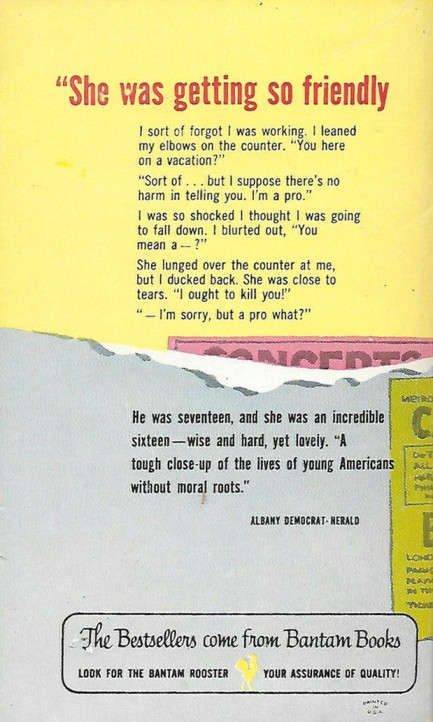
| Hollywoodland | Aug 29 2022 |

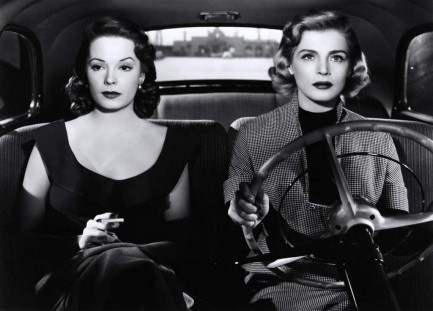
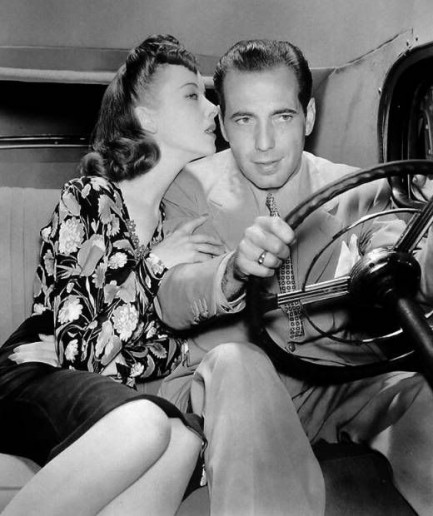 Humphrey Bogart tries to fake drive with Ida Lupino in his ear in 1941's High Sierra.
Humphrey Bogart tries to fake drive with Ida Lupino in his ear in 1941's High Sierra.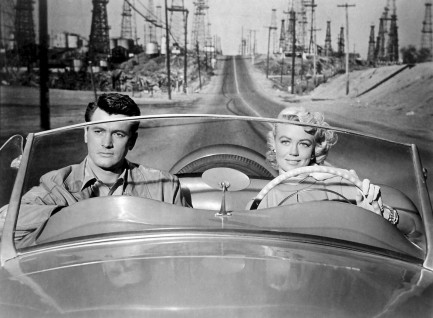 Dorothy Malone, Rock Hudson, and a rear projection of Long Beach, in 1956's Written on the Wind.
Dorothy Malone, Rock Hudson, and a rear projection of Long Beach, in 1956's Written on the Wind.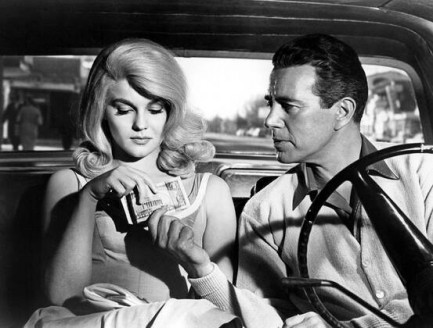 Ann-Margret and John Forsythe in Kitten with a Whip. We think they were parked at this point, but that's fine.
Ann-Margret and John Forsythe in Kitten with a Whip. We think they were parked at this point, but that's fine.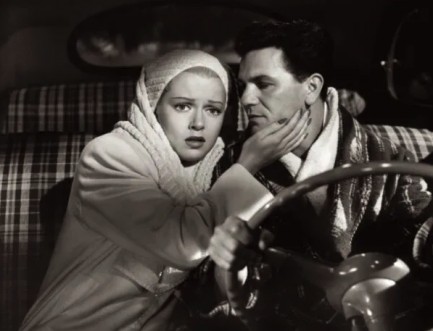
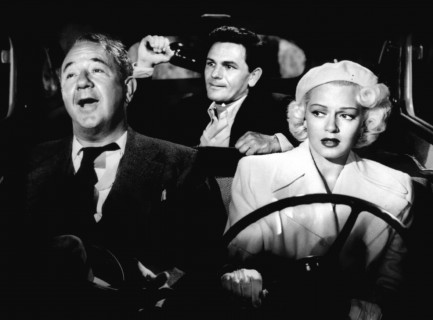 Two shots from 1946's The Postman Always Rings Twice with John Garfield and Lana Turner, followed by of shot of them with soon-to-be murdered Cecil Kellaway.
Two shots from 1946's The Postman Always Rings Twice with John Garfield and Lana Turner, followed by of shot of them with soon-to-be murdered Cecil Kellaway.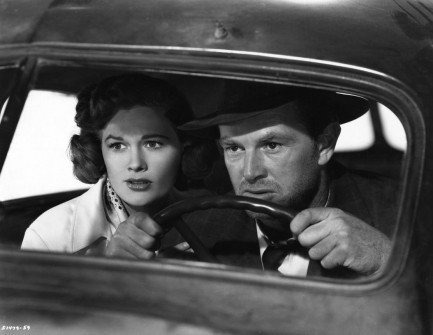
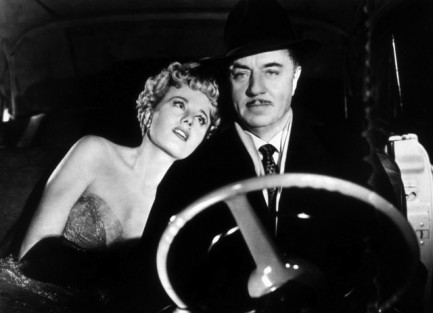 Shelley Winters, looking quite lovely here, fawns over dapper William Powell during a night drive in 1949's Take One False Step.
Shelley Winters, looking quite lovely here, fawns over dapper William Powell during a night drive in 1949's Take One False Step.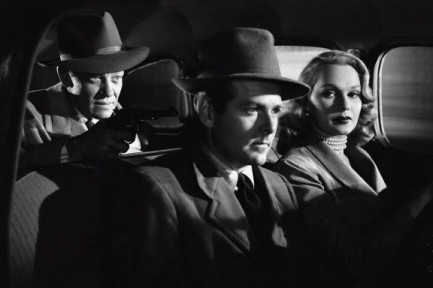 William Talman, James Flavin, and Adele Jergens share a tense ride in 1950's Armored Car Robbery.
William Talman, James Flavin, and Adele Jergens share a tense ride in 1950's Armored Car Robbery.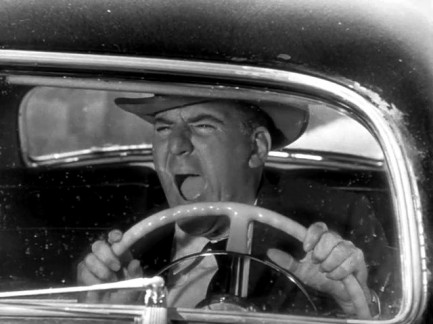 William Bendix rages in 1949's The Big Steal.
William Bendix rages in 1949's The Big Steal.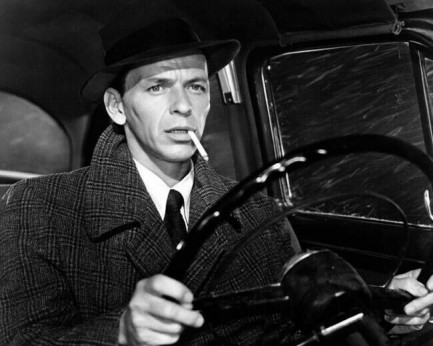 Frank Sinatra drives contemplatively in Young at Heart, from 1954.
Frank Sinatra drives contemplatively in Young at Heart, from 1954.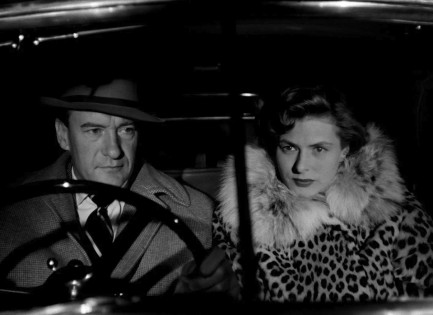
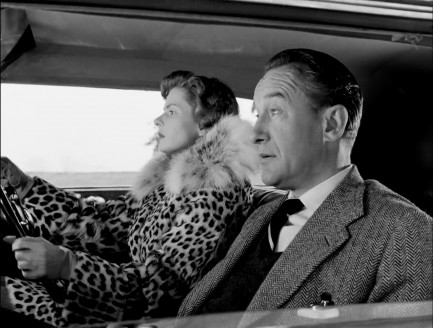 George Sanders drives Ingrid Bergman through Italy, and she returns the favor, in 1954's Viaggio in Italia.
George Sanders drives Ingrid Bergman through Italy, and she returns the favor, in 1954's Viaggio in Italia.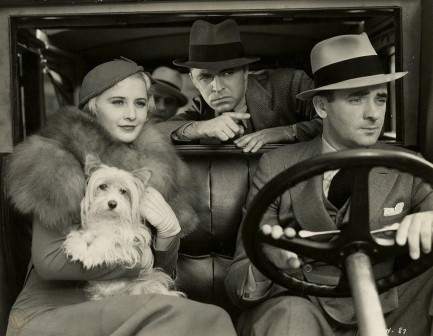 Harold Huber, Lyle Talbot, Barbara Stanwyck and her little dog too, from 1933's Ladies They Talk About.
Harold Huber, Lyle Talbot, Barbara Stanwyck and her little dog too, from 1933's Ladies They Talk About.
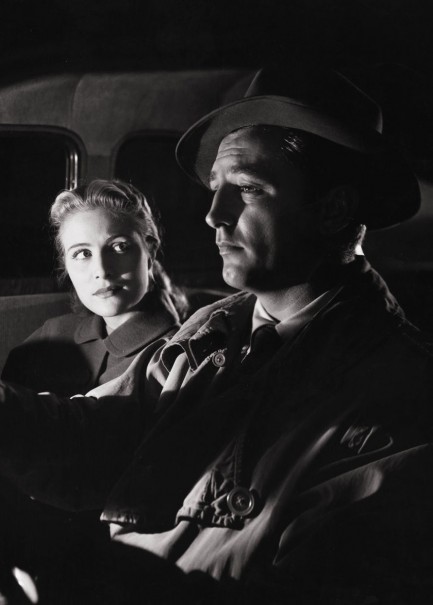 Virginia Huston tells Robert Mitchum his profile should be cast in bronze in 1947's Out of the Past.
Virginia Huston tells Robert Mitchum his profile should be cast in bronze in 1947's Out of the Past.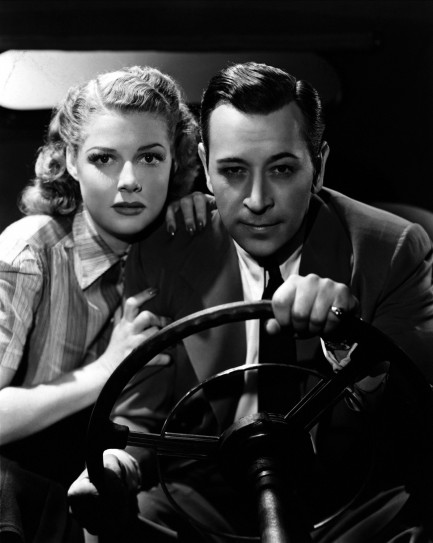 Ann Sheridan hangs onto to an intense George Raft in 1940's They Drive by Night.
Ann Sheridan hangs onto to an intense George Raft in 1940's They Drive by Night.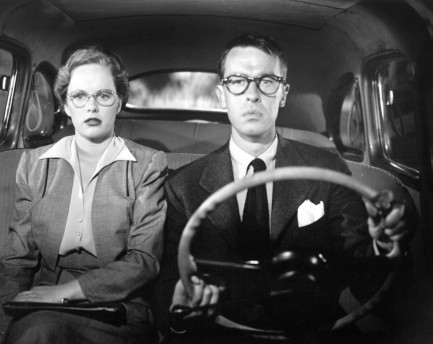 Peggy Cummins and John Dall suddenly realize they're wearing each other's glasses in 1950's Gun Crazy, a film that famously featured a real driving sequence, though not the one above.
Peggy Cummins and John Dall suddenly realize they're wearing each other's glasses in 1950's Gun Crazy, a film that famously featured a real driving sequence, though not the one above. John Ireland and Mercedes McCambridge in 1951's The Scarf.
John Ireland and Mercedes McCambridge in 1951's The Scarf.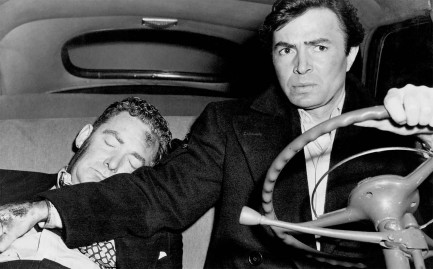 James Mason drives an unconscious Henry O'Neill in 1949's The Reckless Moment. Hopefully they're headed to an emergency room.
James Mason drives an unconscious Henry O'Neill in 1949's The Reckless Moment. Hopefully they're headed to an emergency room.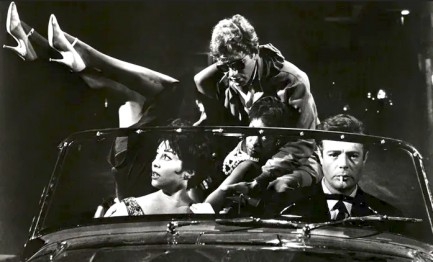 Marcello Mastroianni driving Walter Santesso, Mary Janes, and an unknown in 1960's La dolce vita.
Marcello Mastroianni driving Walter Santesso, Mary Janes, and an unknown in 1960's La dolce vita.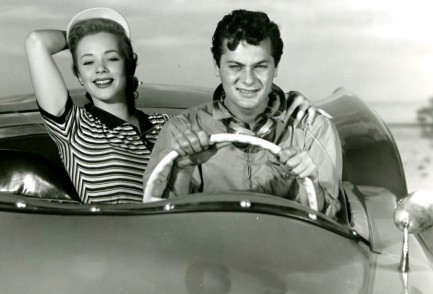 Tony Curtis thrills Piper Laurie with his convertible in 1954's Johnny Dark.
Tony Curtis thrills Piper Laurie with his convertible in 1954's Johnny Dark.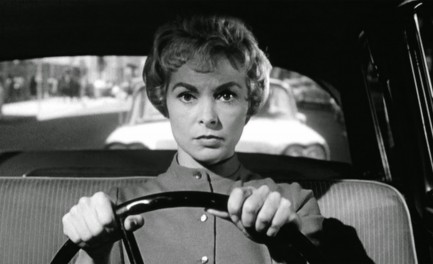 Janet Leigh drives distracted by worries, with no idea she should be thinking less about traffic and cops than cross-dressing psychos in 1960's Psycho.
Janet Leigh drives distracted by worries, with no idea she should be thinking less about traffic and cops than cross-dressing psychos in 1960's Psycho.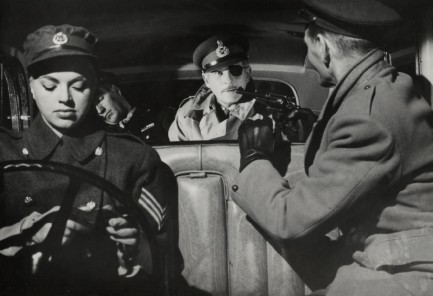 We're not sure who the passengers are in this one (the shot is from 1960's On the Double, and deals with Danny Kaye impersonating Wilfrid Hyde-White) but the driver is Diana Dors.
We're not sure who the passengers are in this one (the shot is from 1960's On the Double, and deals with Danny Kaye impersonating Wilfrid Hyde-White) but the driver is Diana Dors.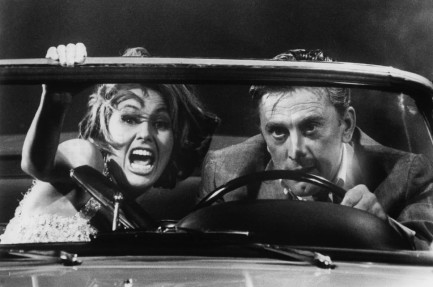 Kirk Douglas scares the bejesus out of Raquel Welch in 1962's Two Weeks in Another Town. We're familiar with her reaction, which is why we're glad the Pulp Intl. girlfriends don't need to drive here in Europe.
Kirk Douglas scares the bejesus out of Raquel Welch in 1962's Two Weeks in Another Town. We're familiar with her reaction, which is why we're glad the Pulp Intl. girlfriends don't need to drive here in Europe.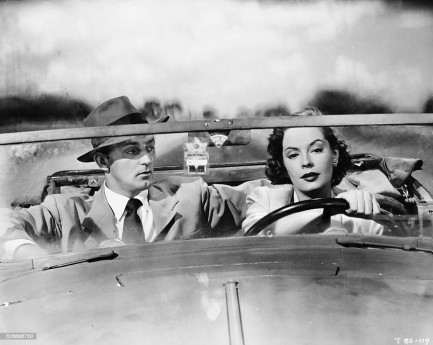 Robert Mitchum again, this time in the passenger seat, with Jane Greer driving (and William Bendix tailing them—already seen in panel ten), in 1949's The Big Steal. The film is notable for its many real driving scenes.
Robert Mitchum again, this time in the passenger seat, with Jane Greer driving (and William Bendix tailing them—already seen in panel ten), in 1949's The Big Steal. The film is notable for its many real driving scenes. James Mason keeps cool as Jack Elam threatens him as Märta Torén watches from the passenger seat in 1950's One Way Street.
James Mason keeps cool as Jack Elam threatens him as Märta Torén watches from the passenger seat in 1950's One Way Street.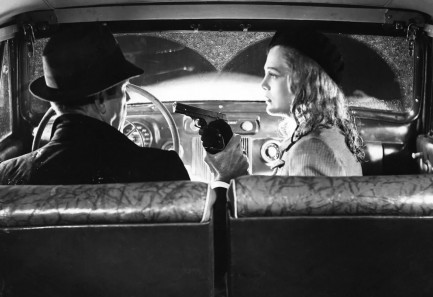 And finally, to take a new perspective on the subject, here's Bogart and Lizabeth Scott in 1947's Dead Reckoning.
And finally, to take a new perspective on the subject, here's Bogart and Lizabeth Scott in 1947's Dead Reckoning.| Vintage Pulp | Jan 18 2020 |

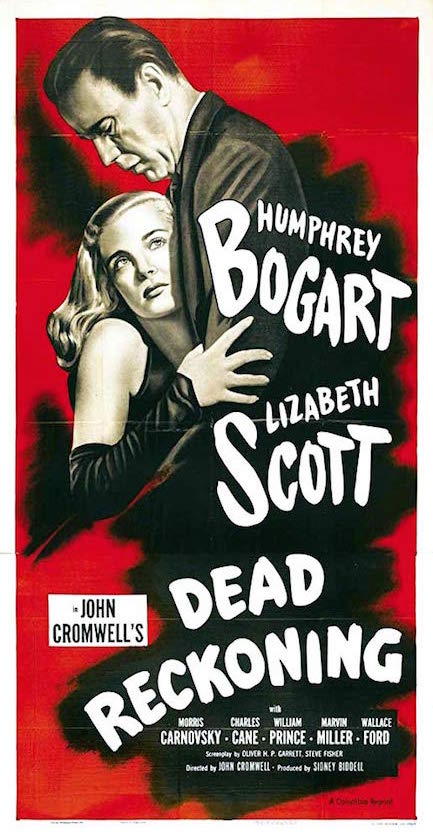
This promo poster for Dead Reckoning is deliberately garish and highly effective at drawing the eye. They don't make 'em like this anymore, nor movies like this either. It had a special premiere today in 1947 in San Francisco, and went into wide release across the U.S. a month later. We shared a piece of Japanese promo art years ago and talked about the film, so if you want to know more, check here.
| Femmes Fatales | May 23 2013 |

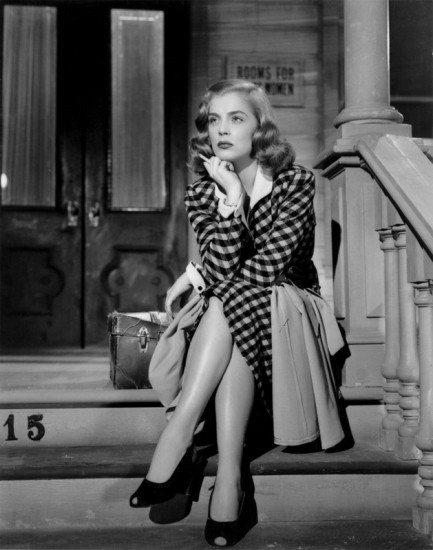
Above, Lizabeth Scott is smoking in more ways than one in this promo image shot for her 1948 film noir Pitfall. She was born Emma Matzo, if you can believe that, which makes her real name maybe the second worst in Hollywood history. But her career has to rank as one of the best in the sense that unlike most actresses she began with starring roles, debuting in 1945’s You Came Along, and later appearing in such classics as The Strange Love of Martha Ivers, Dead Reckoning and I Walk Alone. She last acted in 1972’s Pulp with Michael Caine, and today, aged 90, is retired and living in Southern California.
| Vintage Pulp | Aug 30 2011 |

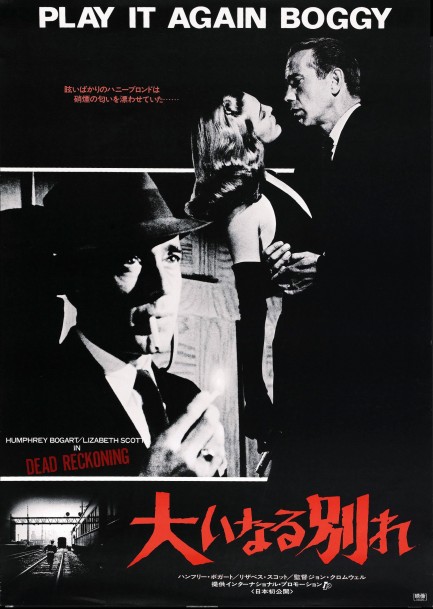
A while back we made fun of some English-language websites for uploading a Japanese poster backwards. Well, now it’s Japan’s turn. Play it again Boggy? Seriously guys? Is that supposed to be phonetic? Maybe. Either way, it just goes to show you that whatever your language is, written down it’s just a bunch of chicken scratching to billions of other people. In any case, what you’re looking at is a poster for the film noir Dead Reckoning, starring Bogie, not Boggy. In Japan the movie was titled Great Split. At least that’s what the big red writing at bottom says. Platinum-haired Lizabeth Scott co-stars with Bogart, and we think she fares better in this than in Pitfall, which we discussed last week. She’s more alluring here, and has a meatier role to play as a woman with a complicated past.
The film is narrated by Bogart, and his tale is peppered with combat and gambling metaphors as various gambits come up “snake eyes,” or he’s “dealt a joker.” Of course, the real wild card is Scott—is she or isn’t she in with the villains? Bogart’s rational side says yes, but his gut—and groin—are seduced by Scott’s siren song. We mean that literally. Mid-century filmmakers often snuck in vocal numbers for their female stars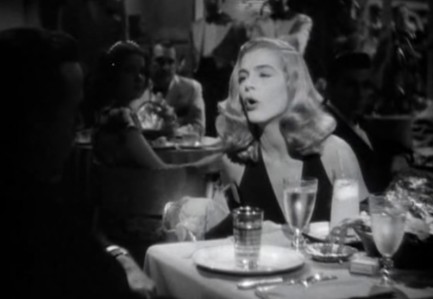
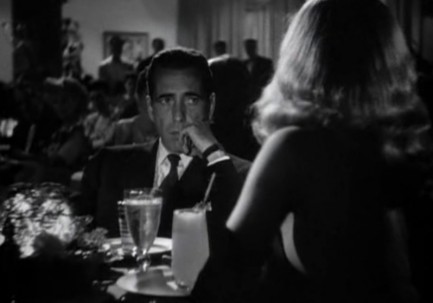
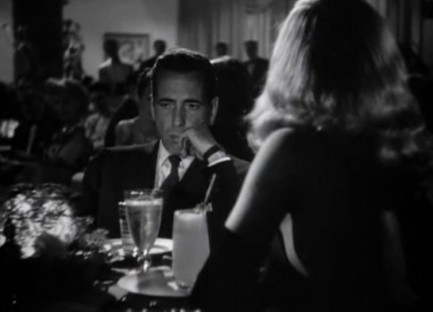 to perform. Sometimes they fit seamlessly into the plot. In this case—not so much. Scott’s routine occurs at dinner while she’s sitting at the table with Bogie. You can see the thoughts playing on his face, above, and, “This is one freeeeaky chick,” eventually loses out to, “I wonder if she dyes her muff?”
to perform. Sometimes they fit seamlessly into the plot. In this case—not so much. Scott’s routine occurs at dinner while she’s sitting at the table with Bogie. You can see the thoughts playing on his face, above, and, “This is one freeeeaky chick,” eventually loses out to, “I wonder if she dyes her muff?”
In the end, the whole conspiracy—the lies, the murders, the blackmail—is all about money. No shock there. And the head villain is the one with the best suit. Of course. So Dead Reckoning isn’t special, and in fact it borrows from a few other film noirs, but how can we resist it when Bogart sneers lines like: “I haven’t had a good laugh since before Johnny was murdered.”? It’s those hardboiled moments that make Dead Reckoning worth watching. As for the mandatory love angle, strings swell and eyes well, but despite best efforts from Bogart and Scott, their chemistry is a bit, er, boggy. So maybe the Japanese were right after all.